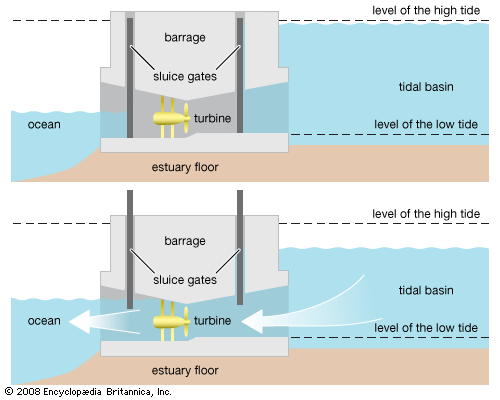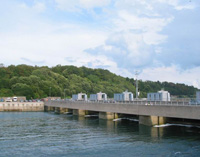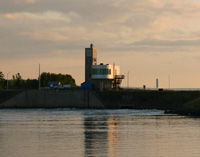Tidal Energy
Harnessing Tidal Energy: Barrages
One method for harnessing tidal energy is a barrage, or tidal barrier, which is very much like a dam. When the water level is higher on one side of the barrage than the other, water is allowed to flow through the turbines to generate electricity.

How a tidal barrage works
During high tide the gates are closed and water is stored “upstream” of the tidal barrage. As the tide falls, the water level on the downstream side of the dam drops. When it’s low enough, the valves are opened for water to flow from the higher, upstream side—through turbines—to the lower, downstream side. The movement of the water rotates the turbines to generate electricity.
Due to the design of the barrage, the reverse can also happen. When the tide reaches its low point and the water level behind the dam is at the low tide level, the valves are again closed and the tide rises again. Water rises on the “downstream” side and when the valves are opened, flows “upstream” where the water level is at low tide.
Thus, barrages can effectively generate power four main times during the day—during the two fall and the two rising tides.
There are only a few operational tidal barrages in the world. The Rance River in France and the Bay of Fundy in Canada have the only large-scale barrages in the world with generating capacities of 240 MW and 20 MW respectively. There is a small scale plant in Kislaya Guba, Russia which generates 400 kW. A few countries have plans for other future projects.
 |  |
| Rance Tidal Power Station (France, 1966) | Annapolis Royal Generating Station (Canada, 1984) |

